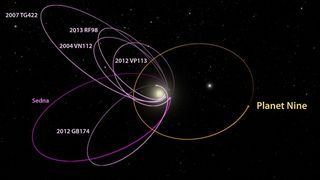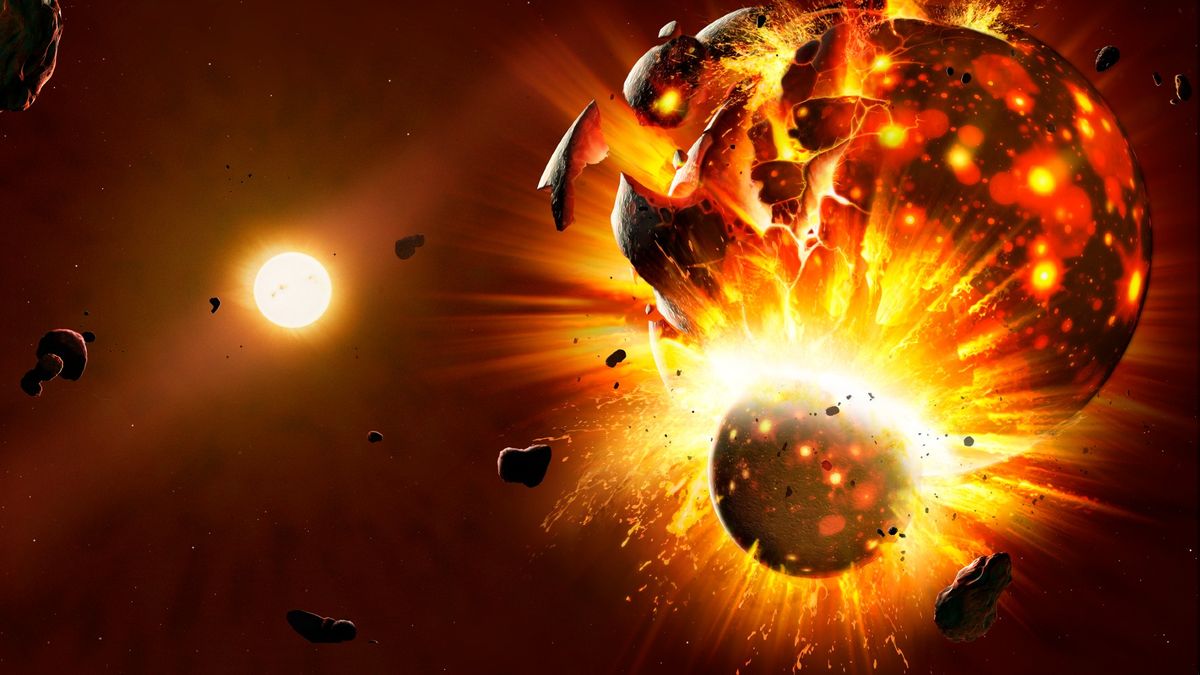More evidence for a hypothetical extra planet lurking in the most distant reaches of our solar system has come to light — and the clues are associated with icy bodies that cross the orbit of Neptune while traversing long, looping paths around the sun. Planet Nine, as the predicted planet is referred to, was first postulated in 2016 by Caltech’s Konstantin Batygin and Michael Brown, the latter having also discovered the dwarf planet Eris in 2005. Their original evidence predominantly focused on the clustering of trans-Neptunian objects (TNOs), which are…
Read MoreTag: Solar System
Uranus and Neptune aren’t made of what we thought, new study hints
Astronomers have long believed that the ice giants Uranus and Neptune are rich in frozen water. However, a new study suggests they may also have tons of methane ice. The findings could help solve a puzzle about how these icy worlds formed. Much about Uranus and Neptune remains unknown. These ice giant worlds have had just a single spacecraft visitor, Voyager 2, which flew past them in the 1980s. As a result, scientists have only a hazy idea of the ice giants’ compositions — for example, that they contain significant…
Read MoreWater-themed plaque to fly on Europa Clipper to Jupiter’s icy ocean moon
A NASA spacecraft dedicated to studying a small ocean world will carry with it a metal plaque etched with the ripples created by the many ways humans say “water.” The Europa Clipper Vault Plate was revealed by NASA on Friday (March 8) at the opening session of the South by Southwest (SXSW) conference in Austin, Texas. Lori Glaze, NASA’s director of planetary science, joined U.S. Poet Laureate Ada Limón on stage to discuss the intersection of space and art, as well as again hear Limón recite her ode, “In Praise…
Read MoreHow giant impacts shaped the formation of the solar system’s planets
If you want to build a planet, you’re going to have to get your hands dirty. That’s the lesson from a recent paper, which outlines just how vital giant impacts are to the formation of planets. Astronomers still aren’t exactly sure how planets get their start. Initially, star systems are just clouds of gas and dust swirling around a newborn star. Some of that gas coalesces to form the seeds of planets. Over millions of years, trillions of those seeds merge, becoming ever larger and attracting their neighbors. At a…
Read MoreUranus and Neptune are actually similar blues, ‘true’ color images reveal
In the summer of 1989, from a remote expanse of our solar system where sunlight is merely a tepid glow, NASA’s Voyager 2 spacecraft radioed to Earth humankind’s very first images of Neptune. The pictures revealed the sun’s outermost planet was a stunning, deep blue orb. In contrast, Uranus, Neptune’s planetary neighbor and the first to be discovered with a telescope, appeared noticeably paler. Both seemingly twin worlds have a lot in common. They’re roughly the same size, almost equally massive and are both enveloped with deep atmospheres made of…
Read MoreEarth’s intense gravity may rip space rocks apart, reducing the risk of ‘planet killer’ asteroids
Every year, dozens of asteroids come closer to our planet than the moon is, and yet catastrophic collisions are exceedingly rare. Now, a new study proposes that Earth has a built-in defense system — its intense gravitational forces — that it uses to tackle asteroid interlopers. The enormous masses of planets and their moons mean they exert tremendous gravitational forces on nearby objects. The differences in gravity these objects experience, called tidal forces because astronomers used them to explain how the moon causes tides on Earth, can be so strong…
Read MorePluto’s ‘almost twin’ dwarf planet Eris is surprisingly squishy
Close to 18 years ago, astronomers spotted a miniature, icy world named Eris billions of miles beyond Neptune. But unlike its dwarf planet cousin Pluto — which New Horizons promoted to a rich, dynamic world after its visit in 2015 — Eris has not had any robotic visitors. It is so far away from Earth, in fact, that it shows up in observations just as a single pixel of light. All in all, scientists know very little about what happens on Eris. Though what we do know is Eris is…
Read MoreEvidence of alien life may exist in the fractures of icy moons around Jupiter and Saturn
Scientists are investigating specific geological features on the largest moons of both Jupiter and Saturn that could be ideal spots for the emergence of life elsewhere in the solar system. The team, led by researchers from the University of Hawaii at Mānoa, looked at what are called “strike-slip faults” on the Jovian moon, Ganymede — the solar system’s largest moon, bigger even than the planet Mercury — and Saturn’s moon, Titan. Faults like these happen when fault walls move past each other horizontally, either to the left or the right,…
Read MoreAstronomers have learned lots about the universe − but how do they study astronomical objects too distant to visit?
This article was originally published at The Conversation. The publication contributed the article to Space.com’s Expert Voices: Op-Ed & Insights. Luke Keller is a Professor of Physics and Astronomy at Ithaca College and has received funding from NASA. NASA’s OSIRIS-REx spacecraft flew by Earth on Sept. 24, 2023, dropping off its sample of dust and pebbles gathered from the surface of near-Earth asteroid Bennu. Analysis of this sample will help scientists understand how the solar system formed and from what sorts of materials. Scientists will begin their analysis in the same facility that analyzed rocks and dust from the…
Read More‘Modest, humble, and uncommonly smart’: How a Soviet mathematician quietly solved the mystery of planet formation
We’ve only got to grips with how the planets in our solar system formed in the last 100 years. In the extract below from “What’s Gotten Into You” (HarperCollins, 2023), Dan Levitt looks at the Soviet mathematician who spent a decade working on a problem that most astronomers had given up on, and — when he finally solved it — was met with disinterest and skepticism. Over 4.8 billion years ago, the atoms that would create us sailed in great clouds of gas and dust, toward… well, nothing. There was…
Read More

